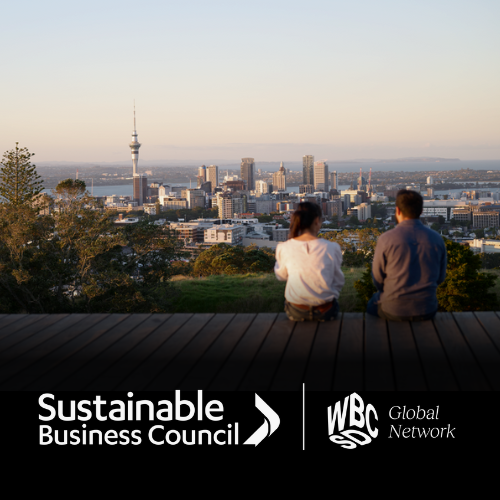What’s COP got to do with it?
As the world gears up, and media attention grows, ahead of COP26 in Glasgow, Kate Wilson Butler, Head of Climate Action, shares some thoughts about why the UN Climate Conference should matter to our Sustainable Business Council NZ and Climate Leaders Coalition members – and everyone else interested in achieving a zero carbon economy in which business, people and nature thrive.
An international conference in chilly Scotland may seem pretty far from New Zealand’s current heightened-alert-level COVID reality. So what will happen at COP 26? Why does it matter? And how is it relevant to climate action on the ground here?
The Conference of the Parties to the United Nations Framework on Climate Change (mercifully, ‘COP’ for short) can conjure images like Isaac Cordal’s street art piece Politicians Discussing Climate Change. It feels like the sea level rises just reading the full name. And while some might dismiss COP as a political talkfest, the reality is it’s got everything to do with real climate action.
Without the international process that the COP is part of, we would not have the Paris Agreement. We would not have the IPCC’s successive Assessment Reports that led to the science-backed temperature goals of 2°C and 1.5°C. Without this global framework, here in Aotearoa we would be very unlikely to have passed Zero Carbon legislation which established the Climate Change Commission and requires setting of emissions budgets.
It’s true that the wheels of multilateral diplomacy turn slowly, particularly with climate change. The most wicked problem of our time is riddled with seemingly intractable structural challenges, such as what Mark Carney famously termed the Tragedy of the Horizons. But climate change is a global problem that requires a global solution. That is why what happens at COP matters. A lot.
Achieving a world limited to 2°C of warming, let alone 1.5°C, is going to require a global economic transformation on an unprecedented scale. The only way to tackle this task is through a collective international response backed up by robust regional and national policies. Even if New Zealand achieves or exceeds our climate goals with a blockbuster Emissions Reduction Plan, we represent about 0.17% of global emissions. That means without a credible international response we will still be facing the effects of climate change courtesy of those who produce the majority of global emissions.
The irony of burning tonnes of carbon to get to a climate conference may be meme-worthy, but being there matters. Each year, the COP is where our leaders must stand alongside their international peers and showcase what’s happening at home. That makes it a key political leverage point. There’s huge momentum in the lead up to COPs, in the form of a well-worn schedule of international meetings. This is accompanied by a global frenzy of government and stakeholder efforts doubling down to drive change and elicit key decisions ahead of the conference. When it comes to the global climate response, we have moved beyond multilateralism to ‘multistakeholderism’.
It’s essential that the business community get on board and ride these waves of momentum to realise their potential to accelerate the transition. That means demonstrating that your business is taking climate action now. There are a range of ways of doing this, from setting science-based targets, to joining the Climate Leaders Coalition here at home, or international efforts like the Race to Zero campaign or Business Ambition for 1.5 °C. It means using your voice to encourage our government to pursue policies that will enable it to say, hand on heart, New Zealand is doing our bit. And it means engaging with the COP however you can – probably virtually – to take the pulse of global climate action and apply those insights domestically.
If we do the mahi at home and turn up at COP with an ambitious plan, we give others the confidence to take action, and have a leg to stand on when we ask the big countries to play ball. Small states like New Zealand also have a key role to play in demonstrating the art of the possible: if we get it right, it is within grasp for us to achieve net zero in way that allows our economy and people to thrive through a well-planned, equitable transition and use of innovative approaches.
That works in reverse too: if countries and companies worldwide are pursuing ambitious emissions reductions, that gives our Government increased licence to come back and work alongside the private sector to drive our transition forward. You may have heard of the ambition loop between business climate action and government policy. We can also think of a mutually reinforcing feedback loop between the domestic and international spheres of climate action, each driving the other to ever-greater heights of ambition.
That might sound somewhat idealistic. It has certainly proven difficult to achieve so far: globally, countries’ nationally determined contributions (NDCs) under the Paris Agreement have us on track to a 3°C world. In New Zealand, we’re in the unenviable position of having seen our GHG emissions rise 23% since 1990. We will need to see transformational policies in the upcoming Emissions Reduction Plan if we want to meaningfully change that.
We need to keep the pressure on to accelerate our transition to a zero carbon future in which business, people and nature thrive together. There are nine years left to bend the emissions curve, go #allinfor2030 and keep 1.5°C within reach. And COP 26 has a lot to do with that.

